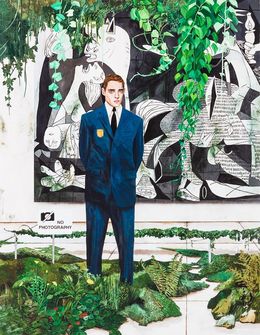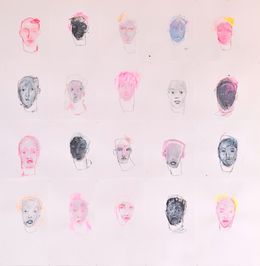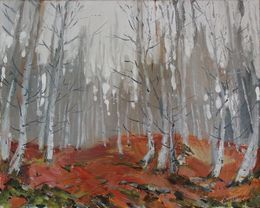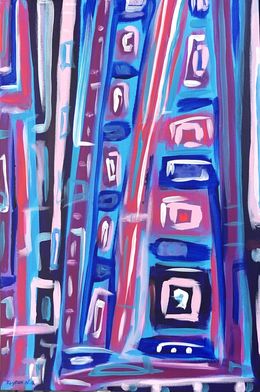
5 Things to Know About Man Ray
The 1920s are often referred to as the “crazy” years. This adjective does not come from just anywhere, it refers to a budding new world. The trauma from the first World War was accompanied by intense deprivation, sickness, and death. It is also synonymous with innovation, revolution, and the explosion of borders.

This context and the incomprehension of the population feeds the entire artistic avant-garde, of which the Dadaists and Surrealists were the most hungry. Man Ray was born in Philadelphia to a family of textile craftsmen on August 27, 1890. His real name was Emmanuel Radnitsky and he became a pillar of 20th-century art. His painting marked with dada did not meet big success in New York, but rather in Paris where the artist puts down his suitcases to settle down. He became quickly known and rose on the Parisian art scene as a renowned photographer. Man Ray builds his artistic ideas with the great Parisian Dada and surrealists figures. His companions are Picabia, Duchamp, Dali, Eluard, and Tzara, among others.
Discover 5 facts about this American artist who faced the madness of the ‘20s, hand in hand with European artists.
The Appearance of Man Ray
The nickname Man Ray answers a need for integration. When his family arrived in America, they were fleeing the Jewish pogroms instigated by Tsar Alexander III of Russia. The Radnitzkys then became the Rays upon arrival to the United States.
The young Emmanuel knew that he wanted to become an artist before he hit adulthood. He attended the Ferrer Center school, a modern institution with political and social opinions that were then known to be very free. There, he met poets and artists such as Adolf Wolff or Adone Lacroix, his future wife.
From the years 1910-1911, he frequented gallery 291 ran by his friend Alfred Stieglitz. The future Man Ray discovered their contemporary painting. The gallery was known in particular to put forward artists establishing a bridge between European and American art.
Determined to make his mark on the art world, Emmanuel Radnitzky returned to the Fine Arts of New York. His teachers, distraught in front of his paintings, advised him to give up, considering that he will never become a talented artist. Furious, he left in a rage and began to paint anything, anywhere. He painted his dreams, ideas, and his inner state. The art of the young New York artist emerged with this disappointment.

Painting is not his only artistic field. Handyman and teeming with ideas, assembling, and creating objects represented a large part of his art. In 1911, he collected samples of fabrics belonging to his parents’ workshop to create an abstract tapestry, Tapestry, signed for the first time with the name Man Ray. The artist was finally born.
From the very beginning of his career, Man Ray was in the state of mind that goes hand in hand with Dada artists. Tapestry is entirely made from everyday objects. He went even further than the cubists who simply used mere additional objects for their canvases. It is a complete work that expresses his disagreement with the academic tradition. Man Ray wished to free himself from what had been done before. A whole new aesthetic was to be created, which Man Ray understood very quickly. He explained, “I’m not interested in a beautiful painting, because in any case, the Ancients did something that we can no longer achieve. The only thing we can do now is to do something different. That’s what’s valuable“.
Collaborating with Marcel Duchamp
Man Ray produced art completely borrowed from Dadaism, art that did not please those in the United States. The artist received almost no success with his paintings. At the same time, the anti-militarist Marcel Duchamp, fleeing the war, found himself in the United States. Having already made a name for himself through numerous scandalous works, such as Le nu descendant de l’escalier (The Nude descending a staircase) in 1912, Duchamp was well-known in the art world.

In the spring of 1915, exhibiting in gallery 291, he met Man Ray. Immediately, a real connection was established between the two. Complimentary to each other, their artistic collaboration went hand in hand with their humor and sarcasm alike. Man Ray and Duchamp were passionate about more conceptual art and wished to embrace the “real” in order to transform it into art. Both artists had the will to redefine what a work of art is and to make its metaphysical aspects resonate. Artwork no longer needed to be a simple 2D space, but be anything they wanted, like a urinal!
As famous as it is provocative, Dust is one of their first joint works. At first the look, the work is confusing. Duchamp and Man Ray confuse the viewer by leaving him in doubt about the subject: is it a battlefield or dust calves? Is it a wide shot or a close-up? Is it a landscape or a still life?
While visiting Duchamp in his workshop, Man Ray noticed a deposit of dust on an engraved glass plate. The motifs that recall fields or roads from an aerial shot are, in fact, part of the preparatory drawing for the work Le Grand Verre.

The photograph appears to the public in 1922, in a literary review accompanied by a poem-legend that intentionally sows doubt: Voici le domaine de Rrose Sélavy/Comme il est aride – comme il est fertile/Comme il est joyeux – comme il est triste! Vue prise en aéroplane par Man Ray.. It is only in 1934 that the artists revealed the secret, renaming the work Dust and signing with both of their names. The very humor of these two artists may be at the origin of the work.
Behind this reading, a second one appears. Photography in Man Ray’s hands is no longer a means of capturing aesthetics, but an opening to a new beauty. It is an invitation to go beyond what we already know. Man Ray gives it another meaning, another definition. It is precisely this way of using photography that has allowed art historians to understand how this technique, so objective, had become so full of sensitivity. The photography of the Surrealists was a major advance in art and the artistic recognition of this technique turned to pleasure, unconsciousness, and dreaming.
Rrose Sélavy was a female alter ego created by the two artists for Duchamp. Under this humorous patronymic, (Rrose Sélavy, Eros, c’est la vie, Eros is life), the French artist wrote numerous works based on puns and counter-puns. Moreover, this character was not only used by Duchamp but by other artists too, such as Robert Desnos. This creation brought to light the whole spirit of Paris, this effervescent art that moved from artist to artist. And it is in this Paris that Duchamp introduces Man Ray.
Paris and the Surrealists
By being the only representative of the Dada movement in New York, Duchamp told Man Ray that he had to leave the American city and come to Paris. He arrives on July 14, 1921, in the French capital and is dazzled by the euphoria that reigns there. In the ‘20s, Paris is in celebration and remained so for a few years. Duchamp took the young American directly to the famous coffee shop Certa, where all the artists meet. Man Ray found himself between André Breton, Louis Aragon, Paul Éluard, and Philippe Soupault, without knowing how to speak a word of French. All moving away themselves from Dada, together they formed surrealism.
The recurrence of the poets names is not without foundation. This new opening of art comes from literature. The Parisian avant-garde was based on this group of scholars in love with lyricism who wrote the official manifesto of surrealism in 1924. All kinds of artists joined the movement, from painters and sculptors to filmmakers, illustrators and photographers. They are no longer defined by their technique or medium.

(Man Ray, Paul Eluard, André Breton,Tristan Tzara, George Ribemont-Dessaignes, Max Jacob…)
The thought of surrealism lead to many collaborations between artists, but also with sponsors and collectors. Man Ray even experimented with the cinema from 1924 to 1929 with a filmography of four short films. It was another way for him to be able to direct plastic aesthetic research on photography and to be able to study movement. His productions, mainly experimental, did not have real success and he quickly abandoned this practice.
However, it is more in the literature that collaborations are the most numerous. Poets and painters worked together in magazines and novels. With Eluard, Man Ray became the illustrator for Les Mains Libres, published in 1937. The realization of this work is based on the automatic writing and drawing of the two artists. Both Man Ray and Eluard devoted themselves to the two exercises, to then, be able to choose. Eluard’s collection of poems then come to illustrate Man Ray’s drawings. The goal was for the reader to have a true experience of surrealist thinking.

Painter or Photographer
Photography came to him through works other than not his own. Disappointed with the photos taken of his works during exhibitions, Man Ray decided to do it for the galleries himself. From then on, the art market representatives realized that Man Ray had a real eye for detail, which increased the orders. This job, not yet fully integrated into art, was his source of money. Known but unsuccessful, his works did not sell. Very quickly the artist understood that he could use this technique differently. Photography is not forced to have a precise aesthetic, it can be just as subtle as it is constructed. In 1920, he had a revelation: taking pictures of wrinkled sheets.
Man Ray through his career has been constantly shifting between the two arts. The artist expressed himself as much about these two techniques, suggesting that they were both equally important. Photography, from an artistic point of view, was a way to express what he cannot in a painting, and vice versa. Moreover, Man Ray never stopped painting and always had a deep desire to make it in art history through painting. Le temps est bon (Time is good) for the American painter is one of his most beautiful masterpieces.
Photography finally became a technique that he completely mastered, giving him the ability to create and construct images. Among the surrealists, he was basically the official photographer, taking portraits of his friends and becoming a true icon creator.
Sensuality and Femininity
Man Ray adored painting the female body. Women were always very present in his work as well as in his existence. His artistic life and love life is nearly impossible to untangle, both being sources of creation. A real exchange existed with his models. Some were muses, like Kiki de Montparnasse, Nush Eluard, Juliet Browner… Others were felllow artists like Lee Miller and Dora Maar. Each relationship brought him a new source of inspiration and a different point of view.

Knowing well the dreamlike surrealism of René Magritte or Joan Miró, Man Ray was particularly directed to the liberation of the unconscious with a very freudian point of view. He exposes the sensuality and the expression of the human desire. Photography allowed him to reimage the female body and to go beyond the classical vision. Man Ray gave a modern perception of it and wanted to make the living visible. He staged his models in compositions, reshaped light, shadows, colors and framing. Simply or ostentatiously, the artist highlighted the sensuality of a body, a gesture, a look.

The photographs being published in magazines and not exhibited, he proposed himself as a fashion photographer, for lack of financial means. Thus, for several years, Man Ray worked with great couturiers such as Poiret, Chanel, as well as fashion magazines such as Vanity Fair, Vogue, and Harper’s Bazaar.
Man Ray, an innovative artist…
To conclude, Man Ray was a deeply innovative artist who fervently wanted to revolutionize art. Anchored in the dada then deep into surrealism, the American photographer and painter nourished his art from both movements. His creations echo his inner state, his works becoming catharsis. He depicted what he saw, what he thought, and what he desired.
Man Ray and his artist friends have, without a doubt, brought new life to Paris, freeing art from its traditional shackles.

About Artsper
Founded in 2013, Artsper is an online marketplace for contemporary art. Partnering with 1,800 professional art galleries around the world, it makes discovering and acquiring art accessible to all.
Learn more













